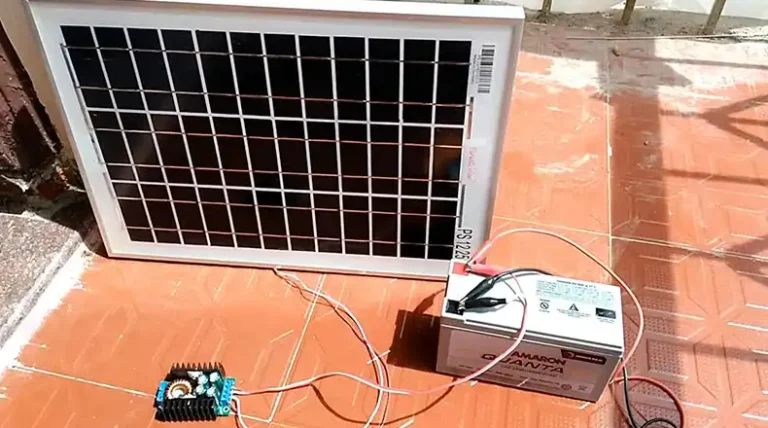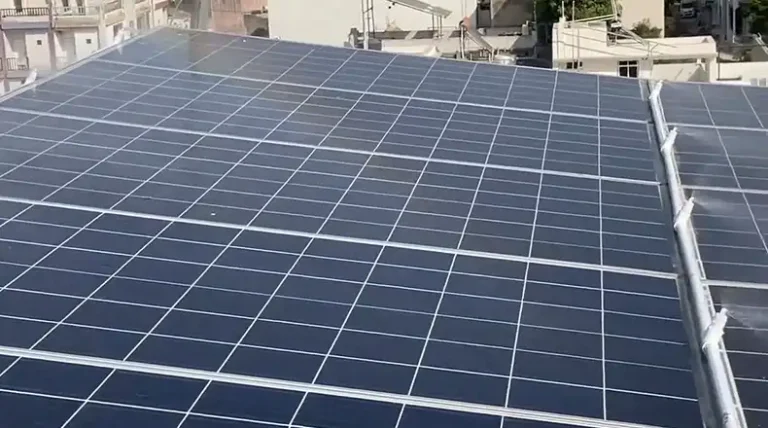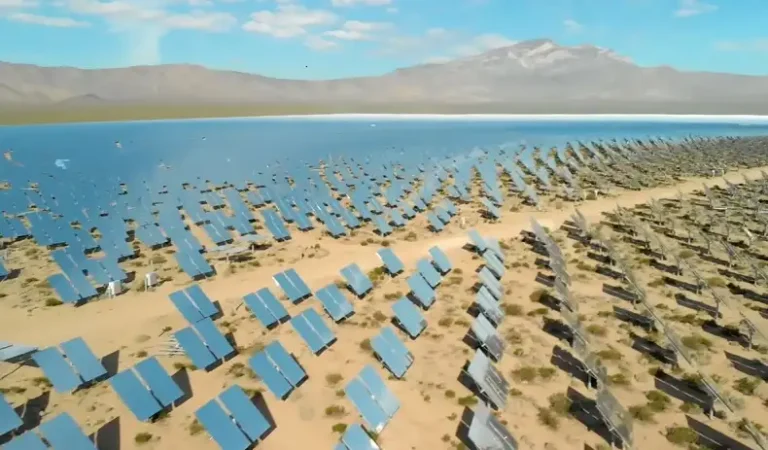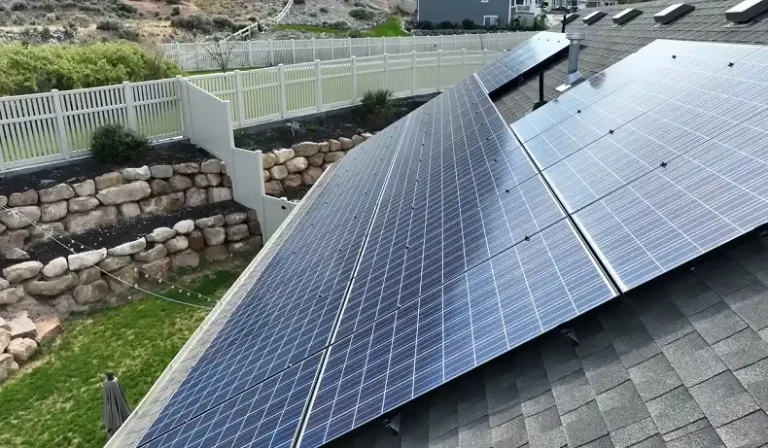Can I Use a Split Charger with a Solar Panel?
Many wonder if they can use a split charger along with their solar panels. This allows simultaneous charging of the auxiliary and starter batteries from the solar array.
In short, yes, you can use a split charger with a solar panel to charge both your auxiliary and starter batteries. However, the specifics of wiring and installing the system correctly are critical for proper functioning and avoiding damage.
Also, effectively implementing a split charging system requires understanding the setup’s pros, and cons, wiring configurations, and compatibility factors. Continue reading to learn solar split charging basics, recommendations for RV and van-dwellers, wiring diagrams, charge controller requirements, and more.
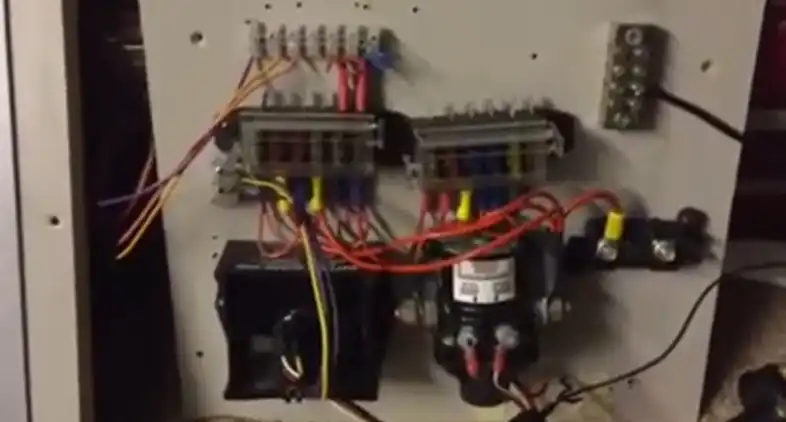
The Split Charging a Solar System
Split charging with solar panels enables simultaneously charging two or more batteries from a single solar array. The most common setup is charging your vehicle’s starter and house batteries from the same solar panels.
Here is a quick rundown of how solar split charging works:
- Solar panels charge a solar charge controller as normal.
- The charge controller sends current to the auxiliary battery until it is fully charged.
- A split charger device then directs surplus solar current to the starter battery.
- The starter battery receives a trickle charge, keeping it maintained.
- Some charge controllers have built-in split charging capabilities.
The key benefit is keeping your starter battery topped up, in addition to powering your RV or van’s lights and appliances. This prevents returning to a dead starter after extended off-grid time.
Split charging works best when the auxiliary battery bank has a much higher capacity than the starter battery. This allows rapid charging of the house bank so the starter battery can receive current. Both batteries will eventually reach full charge if sufficient solar input is available.
Proper system design, wiring, and component matching are essential to avoid over-charging or damaging either battery. Continue reading for solar split charging details.
Pros and Cons of Using Split Charging with Solar Panels
Adding split charging capabilities to your solar system comes with both advantages and disadvantages. Consider these pros and cons when deciding if it fits your off-grid power needs:
Pros
- Keeps starter battery charged in addition to house battery bank
- Prevents returning to a dead starter after boondocking
- Allows charging two batteries from one solar panel array
- Often simpler than installing a dedicated starter solar panel
- Some charge controllers have built-in split charging
Cons
- More complex system design and wiring
- Requires matched components (charge controller, batteries, split charger/diode)
- Risk of over-charging or under-charging either battery
- Added cost for split charger device or specialized charge controller
For most RV and van-dwellers, the convenience of keeping their starter battery topped up while off-grid outweighs the extra complexity. But carefully consider the trade-offs before committing to a solar split charging setup.
Wiring Configuration Options for Solar Split Charging
Properly wiring your split charging system is critical for safety and proper performance. There are two main wiring methods:
Using a Split Charging Diode
A split charging diode setup uses a standard solar charge controller for the auxiliary battery. A diode is added between the charge controller and the starter battery to prevent back-feeding. The diode sends current to the starter battery when the auxiliary battery is full.

Diode pros:
- Simple, low-cost solution
- Works with any charge controller
Diode cons:
- The small voltage drop across the diode
- Needs large gauge wires for minimal drop
- The diode can fail if exposed to reverse current
Using a Split Charging Relay
A split charging relay system uses a relay instead of a diode to engage in charging the starter battery. The relay activates when the auxiliary battery is full. Afuse should also be included to protect the starter battery.

Relay pros:
- Lower voltage drop than diode
- Relay disconnects starter when auxiliary low
Relay cons:
- More complex wiring
- Relay can stick and fail
- Needs a fuse for starter battery protection
Either method can work well for solar split charging. The relay setup provides more control and protection but requires more wiring complexity.
Charge Controller Requirements for Solar Split Charging
Your solar charge controller must have specific capabilities to work in a split charging system:
- Sufficient amperage – Must handle the total output of the solar array when both batteries charge
- Dual bank or multi-bank – Allows setting different charge parameters for each battery
- External voltage sense – Monitors auxiliary battery voltage to activate split charging
Multi-bank MPPT charge controllers work best for controlling split charging. They allow custom settings for charging algorithms, voltages, and amperages for both the starter and house battery banks.
Some MPPT controllers have built-in solar split charging modes. These integrate the relay and sense wiring to automatically divert current when the house bank is full. Built-in split charging greatly simplifies wiring but limits customization.
Carefully match your charge controller capabilities to the demands of the system. An undersized or improperly configured controller can cause problems in split charging applications.
Choosing Batteries for a Split Charging Solar System
Your starter and auxiliary batteries must be properly matched for split charging to work safely and efficiently:
- Battery chemistry – Both banks should have the same chemistry (AGM, gel, lithium, etc.)
- Voltage – Starter and house banks are typically both 12V systems.
- Capacity – The House bank should have a much greater capacity than the starter battery. At least 3 times larger.
It is also ideal if the batteries have similar charging profiles. However, the auxiliary battery bank will reach full charge first since it is oversized compared to the starter battery.
Follow your charge controller manual’s guidance for proper battery bank configurations. Mismatched batteries can cause over-charging and system damage in split charging setups.
Solar Panels for Split Charging Setups
You will need to size your solar array to provide enough power for both battery banks in a split charging system. As a rule of thumb:
- Size array to meet house loads and charge house bank
- Add at least 50W extra solar per 100Ah of starter battery capacity
For example, if your RV house system needs 400W solar but you also want to charge a 100Ah starter battery, add at least 50W more panels. So you would need a 450W array to split charge both banks.
In most cases, your house solar array will have surplus power during peak conditions. This excess can trickle charge the starter battery if properly configured. But adding extra panels helps ensure full charging of both banks daily.
Summary
Using a split charger with solar panels allows simultaneous charging of an RV or van’s starter and house batteries from a single solar array. With proper wiring and matched components, this prevents returning from boondocking trips to dead starter batteries. However, the added complexity requires careful design considerations. The key is oversizing your house battery bank and solar array so your auxiliary system fully charges first. This allows the split charging relay or diode to then direct excess current to the starter battery. Using an MPPT controller with multi-bank charging capabilities also provides the best performance and protection. While not strictly necessary, setting up split charging can greatly improve your off-grid solar experience. Determine if the benefits outweigh the added costs and complexity for your specific RV or van-dwelling needs. With strategic planning and installation, you can successfully harness the sun to keep both your house and starter batteries charged when living off the grid.
FAQs
What Is The Best-Split Charging Device To Use With Solar Panels?
Most solar installers recommend using a split charging relay rather than a diode. Relays provide lower voltage drop and better isolation when the auxiliary battery is low. High amperage relays designed for split charging applications provide the best performance and protection.
How Do I Size The Solar Array And Charge Controller For Split Charging?
Size your solar array to fully charge the house battery bank and power loads. Add at least 50 additional watts of solar per 100Ah of starter battery capacity. Use a multi-bank charge controller rated for the total output of the solar array. The controller should also allow custom charging settings for each battery type.
Where Should The Split Charging Device Be Installed?
Install the relay or diode as close to the batteries as possible to minimize voltage drop in the cables. The device should be after the main charge controller output to the auxiliary battery bank. This allows the controller to fully charge the house bank before splitting current to the starter battery.
Can I Use One Solar Panel Array To Split Charge Four 6v Golf Cart Batteries And A 12v Starter Battery?
Yes, this is a common configuration by configuring the four golf cart batteries as a 24V house bank on the charge controller and using the remaining solar power to trickle charge the 12V starter battery. Just be sure to use at least a 40A MPPT controller and properly size your solar array to charge the high-capacity 24V bank.
How Do I Prevent Over-Charging My Starter Battery When Split Charging?
Use a multi-bank MPPT charge controller that allows custom voltage and amperage settings for each battery bank. Set the absorption and float voltages slightly lower for the starter battery than the house battery. Also, use a small gauge wire between the relay and starter battery to limit current flow.

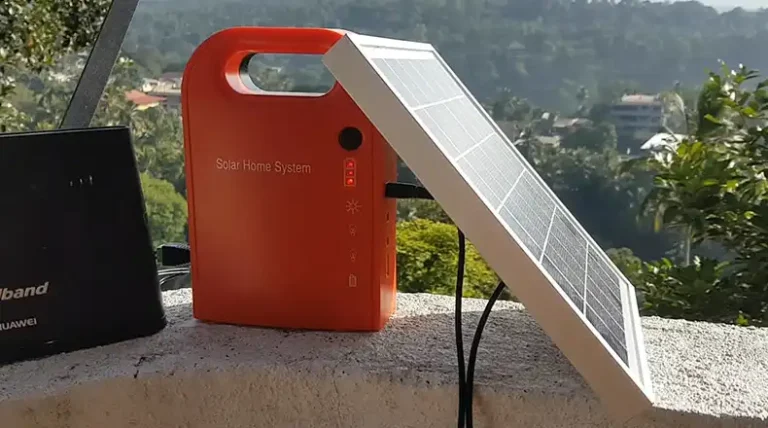
![[Answered] What Is a Safe Distance to Live From A Solar Farm?](https://www.itekenergy.com/wp-content/uploads/2023/07/What-Is-a-Safe-Distance-to-Live-From-A-Solar-Farm-768x428.webp)
